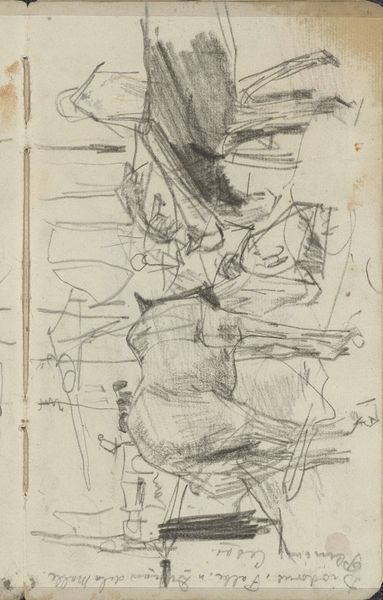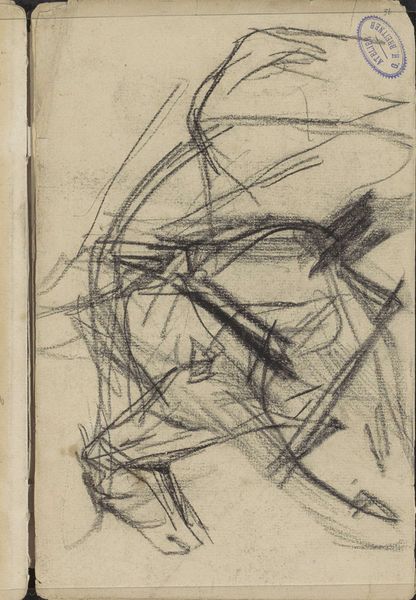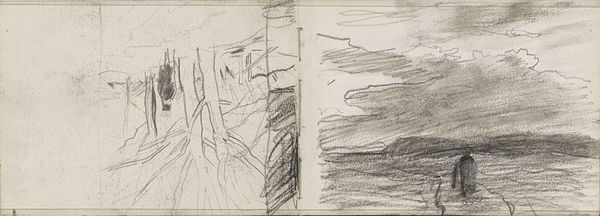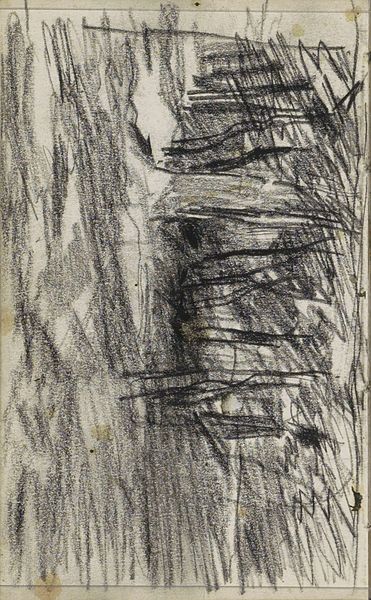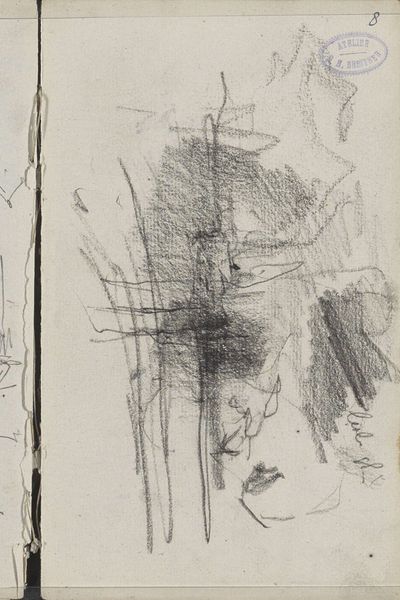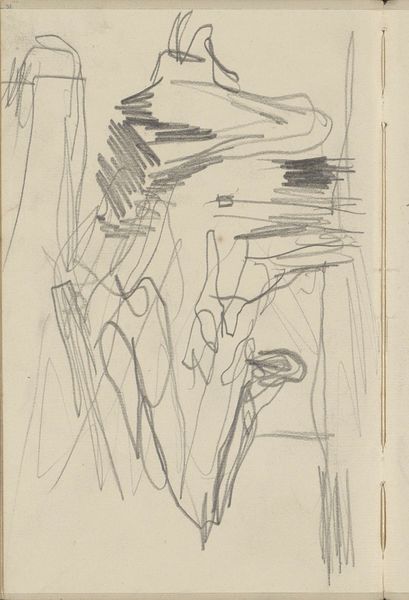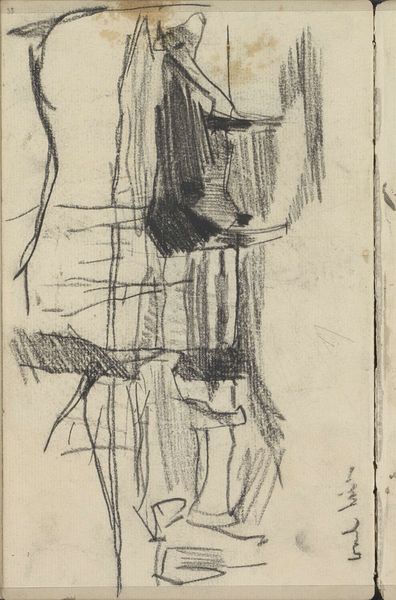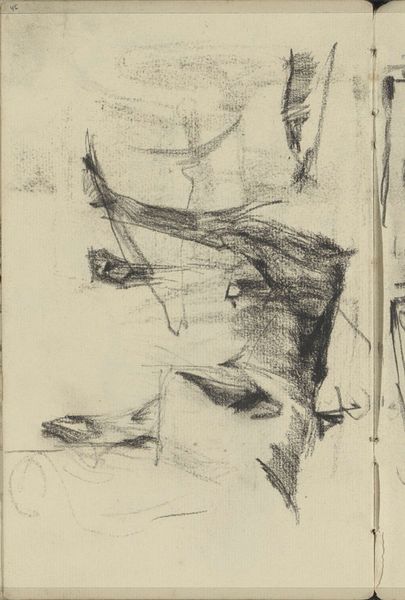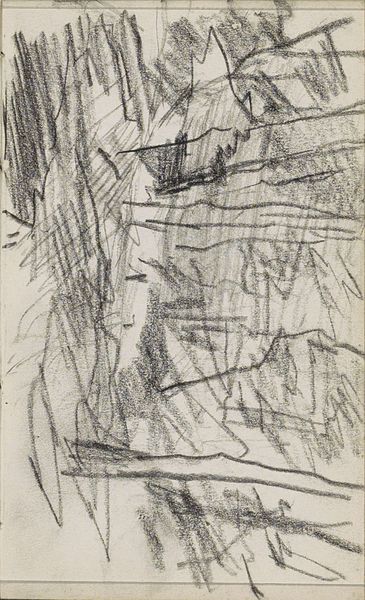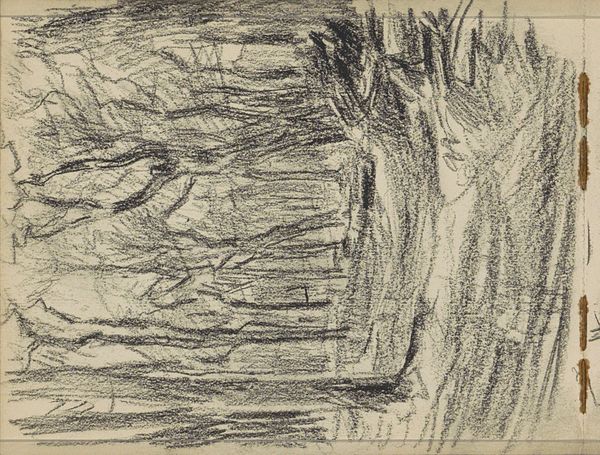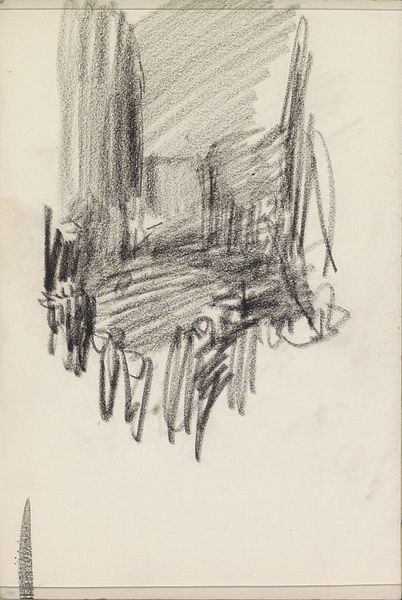
Copyright: Rijks Museum: Open Domain
Curator: Let’s take a look at George Hendrik Breitner's "Paardenbenen," a graphite drawing on paper, created sometime between 1886 and 1903. Editor: The first thing that strikes me is how dynamic and raw it feels. There's an almost frenetic energy in the lines, especially with those multiple studies overlapping. Curator: Breitner was, of course, deeply embedded in the late 19th-century Amsterdam art scene. The labor involved in transporting goods around the industrializing city often fell to horses, reflecting evolving urban infrastructure and labor practices of the time. One could almost hear the sounds of the horses hooves clattering over the stone streets through these marks. Editor: Exactly! And thinking about those horses – the societal reliance on them highlights questions around animal labor, the inequalities it perpetuates, and our relationship to non-human workers. Were they overworked? Well-fed? Treated with respect? This glimpse offers insight into a specific working relationship within a specific timeframe. Curator: Indeed. He used graphite on paper—readily available and inexpensive—and worked swiftly. We should acknowledge that his sketches allowed a new economy of representing this subject, one that democratizes both the production and reception of the art. The swift strokes communicate an impressionistic snapshot but equally make the conditions in which it came to being visible to its public. Editor: Considering that impressionistic approach also reveals something about the social gaze in an urban environment. How much attention did people really pay to the laboring animals? Was it merely fleeting observation, translated by Breitner's hurried style? It encourages us to contemplate what he chose to highlight, and conversely, what was left in the shadows. Curator: And let’s also recall the drawing itself; this is about the act of making. This wasn’t high art. This was a utilitarian means of observation. Breitner understood the importance of representing the tangible experiences of urban life in all its complexity. It reminds us to observe these narratives that may be rendered obscure because of being intertwined in complex networks of power. Editor: Ultimately, "Paardenbenen" speaks to the multi-faceted reality of human progress – with its advancement being literally and metaphorically carried out on the backs of laboring beings, hidden in plain sight, but not hidden in Breitner’s view. Curator: And to the significance of drawing, the material, as an important mode of seeing, feeling, and documenting history.
Comments
No comments
Be the first to comment and join the conversation on the ultimate creative platform.
